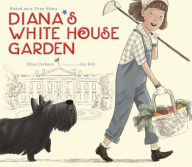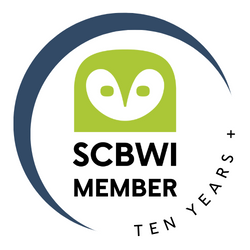When my daughters were young, back in the early 1990s, I searched for picture books with strong female protagonists and especially those featuring women in history – a topic I was then studying in graduate school. While a few picture books existed about the “big women” and “big topics,” like Susan B Anthony and Elizabeth Cady Stanton and their fight for women’s suffrage, books like today’s perfect picture book did not yet exist. Thankfully, that is no longer true.
 Title: Diana’s White House Garden
Title: Diana’s White House Garden
Written By: Elisa Carbone
Illustrated By: Jen Hill
Publisher/date: Viking, Penguin Books for Young Readers/2016
Suitable for Ages: 5-8
Themes/Topics: American history, Victory Gardens, World War II, making an impact, White House
Opening: “Diana Hopkins lived in a white house. The White House.”
Brief Synopsis: Based on a true tale, Diana’s White House Garden tells the story of Diana Hopkins, who lived at the White House during the Roosevelt administration, and her role in the promotion of Victory Gardens in the US during World War II.
Links to Resources:
- Plant a vegetable garden;
- A teachers’ guide includes a list of other books about gardening, resources to learn about Victory Gardens, and resources to discuss the depiction of African Americans in historical picture books;
- Think about a big problem. How can you, your family or your class make a difference?
Why I Like this Book:
Diana’s White House Garden presents a little-known historical fact that involves a child near in age to listeners and tells the story in a way that leads readers and listeners to think about present-day major problems, like war, hunger or poverty, and how their actions can make a difference. As noted in a New York Times book review, the book “humanizes history, reminding us that children are a part of it, too”. I’d add that it is a great jumping off point to discuss World War II, the home front, and even, perhaps, the memories of elderly relatives and friends about the war and that era.
In an afterward, illustrator Jen Hill indicates that a “lot of research” went into depicting this story and the 1940s White House. For instance, she includes in one spread John Pye, the African-American butler famed for his purchase of the first War Bond in 1942. Ms. Hill also discovered that the Wonder Woman comic strip debuted before the events depicted in this story. She notes that she found it “a fun prop as well as an apt metaphor for Diana’s determination to be a hero to her country.” I’d agree.
A Note about Craft:
Diana’s White House Garden is based on a true story. By not adhering to every factual detail of this story, Ms. Carbone is able to use the typical picture book narrative arc: main character has a problem (Diana wants to help the war effort, to be a hero); she tries a few ways to solve it (being a spy, hanging important signs, and sticking pins on the furniture to keep enemies away); but she fails at all of them. She then volunteers to tend the Victory Garden and be its poster child, thus achieving her goal and changing/learning in the process. In an afterward, we learn that the failed incidents did occur, but my guess is that Roosevelt, or some savvy advisor, conceived of a child as “head gardener” to create the narrative that “even a child” can grow a Victory Garden and help the war effort, and that the incidents portrayed didn’t occur in just the order and in just the way written.
Where to draw the line between factual adherence and writing a compelling account is a line that all non-fiction writers face. I’m happy that Ms. Carbone and the editors at Viking chose to portray this story in the way that they have.
Diana’s White House Garden is a Junior Library Guild selection.
This Perfect Picture Book entry is being added to Susanna Hill’s Perfect Picture Books list. Check out the other great picture books featured there!







I love true stories about strong girls. Have not heard about Diana creating a Victory Garden at the White House. Such an important time in history. It does humanize history. Thanks for sharing.
I hadn’t heard of this either. I often wonder how & where these tidbits are found.
Yay, another factual picture book to add to my reading list. I’m curious, too, where these interesting historical accounts are found. Having grown up with a mother who treasured the gardens she grew all over our property, I know I’m going to enjoy this book.
What a terrific choice, Patricia! Love the subject matter and the way it’s handled, and your note on craft!
I chose this book to review this week, too. Must be the season 🙂 It’s a good one!
Great minds think alike!
Historical fictions are fun and educational. Thanks for the recommendation.
I love stories about strong girls. And gardens. Put them together and you’ve got … a picture book! Can’t wait to read this.
What a great story and such an uplifting one for girls. Lovely find. Thanks for sharing.